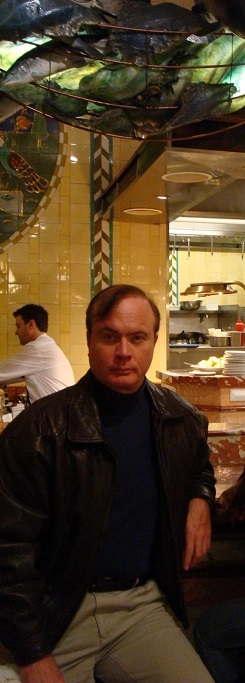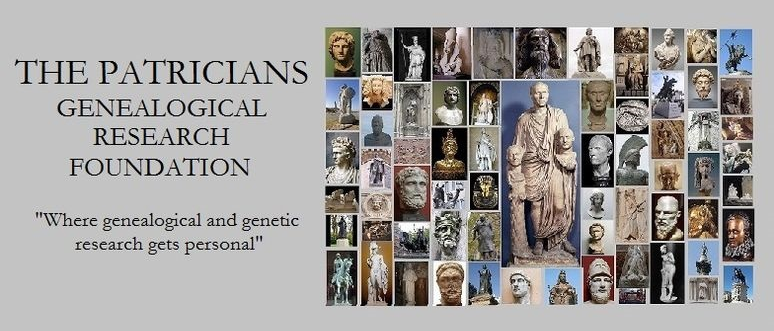








Historians have long regarded her reign as the Golden Age of the English Renaissance. English art, particularly dramatic arts, flourished during the Elizabethan period of English history.
While married to Queen Mary I, Philip II of Spain (1527 – 1598, ) was co-regent monarch of England. After her death, he plotted to seize the English monarchy from Elizabeth by force. In the end, she prevailed in the titanic tussle by wrecking the Spanish Armada along with his credibility at his royal court in Madrid. Lord High Admiral Charles Howard (1536 – 1624) commanded the English navy that led to the rout.
There are several credible theories that the Virgin Queen surreptitiously gave birth to at least three sons (possibly Earl Edward de Vere, Sir Francis Bacon, and Earl Robert Devereux) and at least one daughter (Elinor de Lacy).
The plot of the film Anonymous (2011) also posits that the incestuous relationship between Elizabeth and Edward de Vere produced Henry Wriothesley, 3rd Earl of Southampton (1573 – 1624), or Prince Henry IX Tudor. If legitimized, his heirs would have had a claim to the throne. Curiously, before her death, Elizabeth changed the laws of monarchal succession to allow that to happen, but, of course, it never did.
Queen Elizabeth’s mitochondrial DNA lineage is unparalleled in the history of royalty and eclipses her father’s royal YDNA heritage by a wide margin in comparison. For instance, she possessed the exactly same mtDNA as Saint Bertha of the Franks 541 – 616, 2nd great-granddaughter of Clovis Meroving, 1st King of All Franks (466 – 511), wife of King Saint Aethelbert I of Kent (522 – 615).
Queen Elizabeth, who executed twenty-two peers of the realm during her reign (slightly less than half the body count that her father beheaded during his) condemned Thomas Howard, 4th Duke of Norfolk to death for his principal role in the plot to assassinate her and install Mary, Queen of Scots, as her replacement and his wife. He was beheaded on Tower Hill on 2 June 1572. Both his cousin, Catherine Howard, the short-lived Queen consort of England, and his father, Henry Howard, Earl of Surrey, met a similar fate during her father’s reign. All were agnatic descendants of Duke of Norfolk John Howard, KG (1421 – 1485).
Constructed by her grandfather, King Henry VII, Elizabeth died in Richmond Palace, which was at its time represented the most ostentatious degenerative display of European royal extravagance ever built during the Middle Ages. Lord Protector Oliver Cromwell (1599 – 1658) sold the contents and destroyed most of the palace in his campaign to rid England of every visible trace of royalty.
The eponym of the U.S. State of Virginia., the “Virgin Queen” is ranked #94 in Hart’s Most Influential People in History – Top 500 List (125).
Related ancestral blog articles
The Fifteen Decisive Battles of the World (1851), Sir Edward Shepherd Creasy
Elizabeth I Tudor, Queen of England and Ireland
Birth 7 Sep 1533 in Greenwich Palace, London, Middlesex, England
Death 24 Mar 1603 in Richmond Palace, London, Middlesex, England
Ancestry.com citation/Lineages
2nd cousin 12x removed BOLEYN-HOWARD-WOOD-COLLINS
3rd cousin 14x removed CROMWELL-WHALEY-SPENCER-REYNOLDS-SPRAGUE-TRIPP-OUTWATER-COLLINS
2nd cousin 15x removed BOLEYN-HOWARD-TRIPP-OUTWATER-COLLINS
6th cousin 13x removed BEAUFORT-HOLLAND-FITZALAN-MOWBRAY-HOWARD-WOOD-COLLINS
8th cousin 15x removed PLANTAGENET-CAPET-ROHAN-LANDRY-BOURG-CYR-BRULE
9th cousin 13x removed PLANTAGENET-FITZALAN-MOWBRAY-HOWARD-WOOD-COLLINS
9th cousin 16x removed VALOIS-BOURGOGNE-CAPET-D’EVREUX-ROHAN-LANDRY-BOURG-CYR-BRULE
14th cousin 17x removed ABERFFREW-WINDSOR-HASTINGS-HERON-COLLINGWOOD-COLLINS
14th cousin 13x removed BEAUFORT-HOLLAND-LA ZOUCHE-ROHAN-LANDRY-BOURG-CYR-BRULE
44th cousin 20x removed COELING-MAWR-MERIADOC-CORNOUAILLE-PORHOET-ROHAN-LANDRY-BOURG-CYR-BRULE
The Patricians, A Genealogical Study – Ebook Editions (Epub, PDF & Kindle) US$5.95


Steven Wood Collins (1952 – still living) Antiquarian, Genealogist, Novelist


52 replies on “Elizabeth I Tudor, Queen of England & Ireland (1533 – 1603) Eponym of the Elizabethan Age”
[…] Elizabeth I Tudor, Queen of England & Ireland (1533 – 1603) 2-12 […]
LikeLike
[…] Elizabeth I Tudor, Queen of England & Ireland (1533 – 1603) 2-12 […]
LikeLike
[…] Elizabeth I Tudor, Queen of England & Ireland (1533 – 1603) 2-12 […]
LikeLike
[…] Elizabeth I Tudor, Queen of England & Ireland (1533 – 1603) 2-12 […]
LikeLike
[…] Elizabeth I Tudor, Queen of England & Ireland (1533 – 1603) 2-12 […]
LikeLike
[…] Elizabeth I Tudor, Queen of England & Ireland (1533 – 1603) 2-12 […]
LikeLike
[…] Elizabeth I Tudor, Queen of England & Ireland (1533 – 1603) 2-12 […]
LikeLike
[…] Elizabeth I Tudor, Queen of England & Ireland (1533 – 1603) 2-12 […]
LikeLike
[…] Elizabeth I Tudor, Queen of England & Ireland (1533 – 1603) 2-12 […]
LikeLike
[…] Elizabeth I Tudor, Queen of England & Ireland (1533 – 1603) 2-12 […]
LikeLike
[…] Elizabeth I Tudor, Queen of England & Ireland (1533 – 1603) 2-12 […]
LikeLike
[…] Elizabeth I Tudor, Queen of England & Ireland (1533 – 1603) 2-12 […]
LikeLike
[…] Elizabeth I Tudor, Queen of England & Ireland (1533 – 1603) 2-12 […]
LikeLike
[…] Elizabeth I Tudor, Queen of England & Ireland (1533 – 1603) 2-12 […]
LikeLike
[…] Elizabeth I Tudor, Queen of England & Ireland (1533 – 1603) 2-12 […]
LikeLike
[…] Elizabeth I Tudor, Queen of England & Ireland (1533 – 1603) 2-12 […]
LikeLike
[…] Elizabeth I Tudor, Queen of England & Ireland (1533 – 1603) 2-12 […]
LikeLike
[…] Elizabeth I Tudor, Queen of England & Ireland (1533 – 1603) 2-12 […]
LikeLike
[…] Elizabeth I Tudor, Queen of England & Ireland (1533 – 1603) 2-12 […]
LikeLike
[…] Elizabeth I Tudor, Queen of England & Ireland (1533 – 1603) 2-12 […]
LikeLike
[…] Elizabeth I Tudor, Queen of England & Ireland (1533 – 1603) 2-12 […]
LikeLike
[…] Elizabeth I Tudor, Queen of England & Ireland (1533 – 1603) 2-12 […]
LikeLike
[…] Elizabeth I Tudor, Queen of England & Ireland (1533 – 1603) 2-12 […]
LikeLike
[…] Elizabeth I Tudor, Queen of England & Ireland (1533 – 1603) 2-12 […]
LikeLike
[…] Elizabeth I Tudor, Queen of England & Ireland (1533 – 1603) 2-12 […]
LikeLike
[…] Elizabeth I Tudor, Queen of England & Ireland (1533 – 1603) 2-12 […]
LikeLike
[…] Elizabeth I Tudor, Queen of England & Ireland (1533 – 1603) 2-12 […]
LikeLike
[…] Elizabeth I Tudor, Queen of England & Ireland (1533 – 1603) 2-12 […]
LikeLike
[…] Elizabeth I Tudor, Queen of England & Ireland (1533 – 1603) 2-12 […]
LikeLike
[…] Elizabeth I Tudor, Queen of England & Ireland (1533 – 1603) 2-12 […]
LikeLike
[…] Elizabeth I Tudor, Queen of England & Ireland (1533 – 1603) 2-12 […]
LikeLike
[…] Elizabeth I Tudor, Queen of England & Ireland (1533 – 1603) […]
LikeLike
[…] Elizabeth I Tudor, Queen of England & Ireland (1533 – 1603) […]
LikeLike
[…] Elizabeth I Tudor, Queen of England & Ireland (1533 – 1603) 2-12 […]
LikeLike
[…] Elizabeth I Tudor, Queen of England & Ireland (1533 – 1603) […]
LikeLike
[…] Elizabeth I Tudor, Queen of England & Ireland (1533 – 1603) 2-12 […]
LikeLike
[…] Elizabeth I Tudor, Queen of England & Ireland (1533 – 1603) 2-12 agnatic 9,1 […]
LikeLike
[…] Elizabeth I Tudor, Queen of England & Ireland (1533 – 1603) 2 […]
LikeLike
[…] immediately after his return to England from his world circumnavigation voyage. As commanded by HRH Elizabeth I, the privateer performed flawlessly in wreaking havoc on Spanish galleons he encountered during the […]
LikeLike
[…] Elizabeth I Tudor, Queen of England & Ireland (1533 – 1603) […]
LikeLike
[…] Elizabeth I Tudor, Queen of England & Ireland (1533 – 1603) 2-12 […]
LikeLike
[…] Elizabeth I Tudor, Queen of England & Ireland (1533 – 1603) […]
LikeLike
[…] Elizabeth I Tudor, Queen of England & Ireland (1533 – 1603) […]
LikeLike
[…] brother of Elizabeth I Tudor, Queen of England & Ireland (1533 – 1603) […]
LikeLike
[…] sister of Elizabeth I Tudor, Queen of England & Ireland (1533 – 1603) […]
LikeLike
[…] Elizabeth I Tudor, Queen of England & Ireland (1533 – 1603) […]
LikeLike
[…] Elizabeth I Tudor, Queen of England & Ireland (1533 – 1603) […]
LikeLike
[…] Elizabeth I Tudor, Queen of England & Ireland (1533 – 1603) […]
LikeLike
[…] Elizabeth I Tudor, Queen of England & Ireland (1533 – 1603) […]
LikeLike
[…] Elizabeth I Tudor, Queen of England & Ireland (1533 – 1603) […]
LikeLike
[…] Elizabeth I Tudor, Queen of England & Ireland (1533 – 1603) […]
LikeLike
[…] King Henry VIII beheaded two of his wives, both of whom were my genealogical cousins; namely, Anne Boleyn (1599 – 1536) and Catherine Howard (1521 – 1542), 2nd great-granddaughter of Duke John Howard (1421 – 1485). Anne, of course, was the mother of Queen Elizabeth I. […]
LikeLike